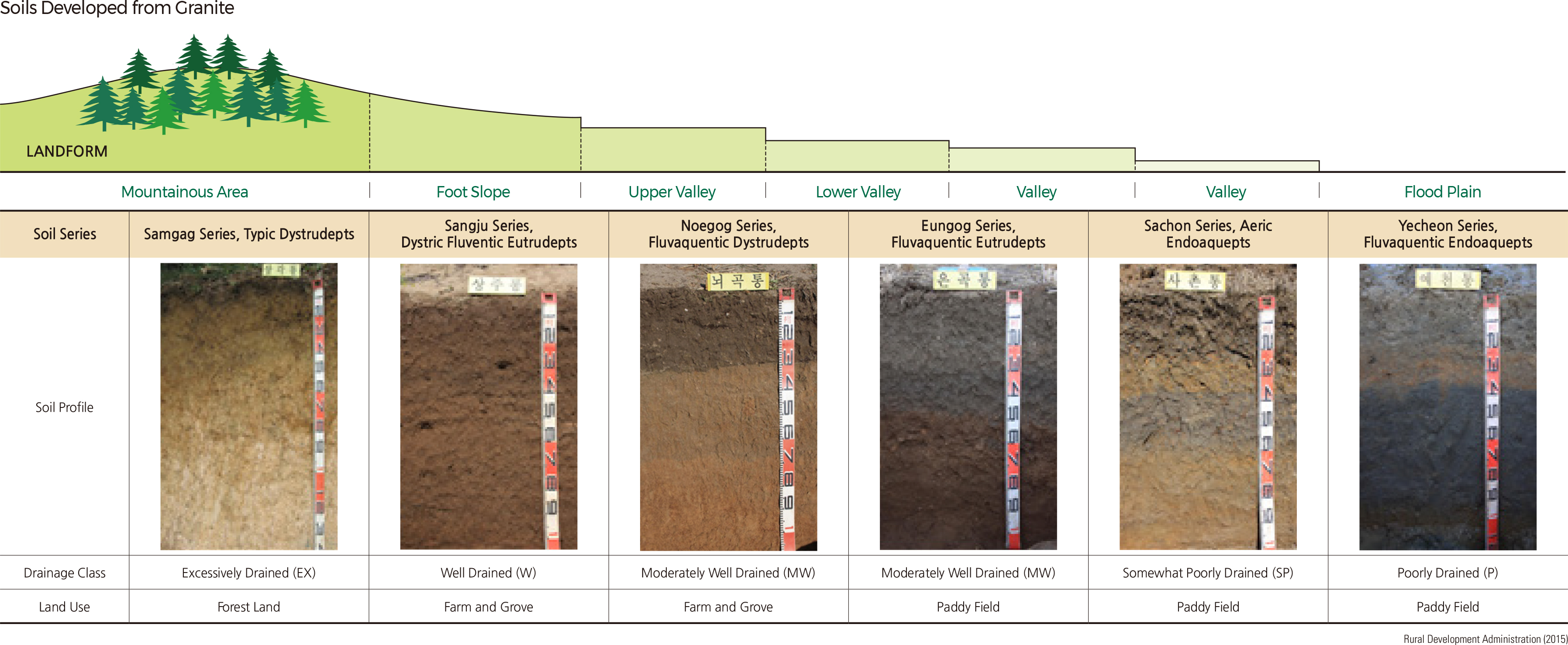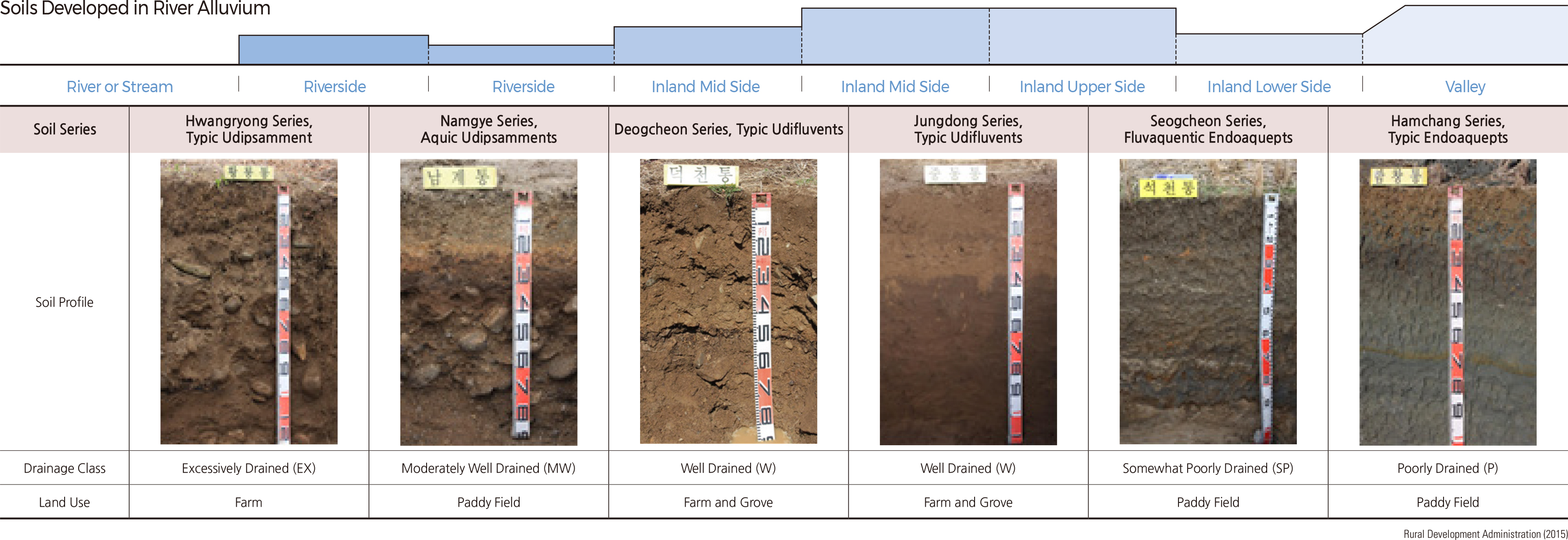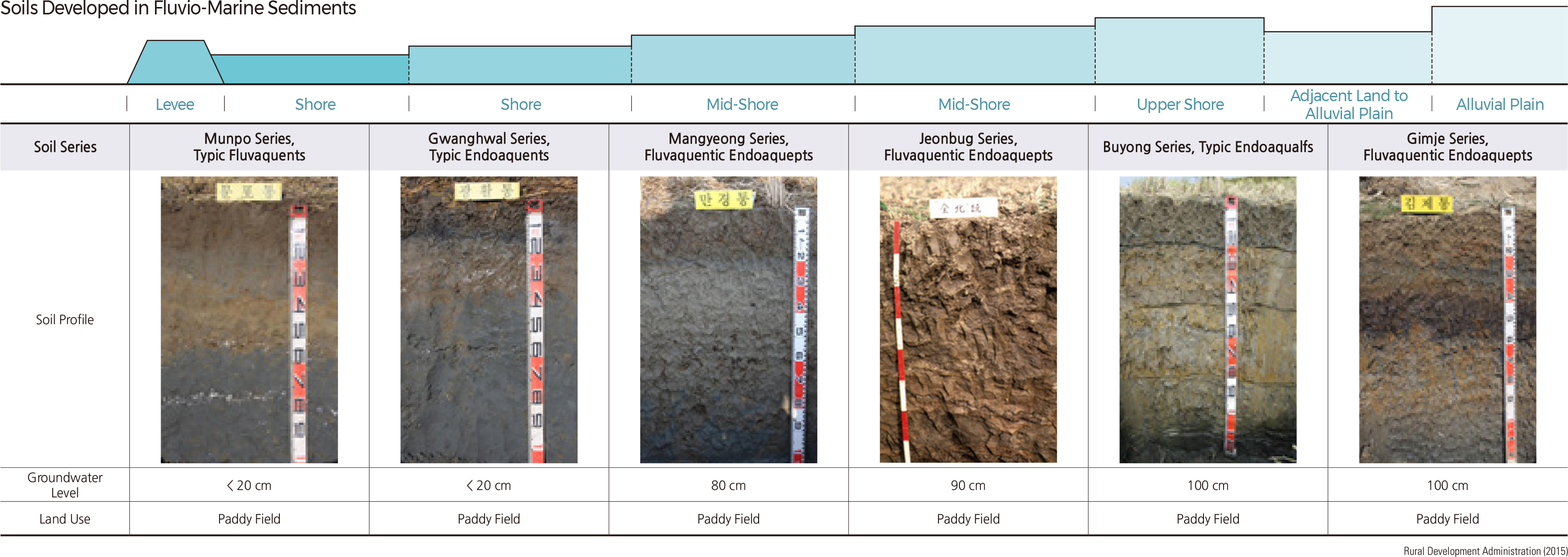English II 2020
Soil-forming factors that determine the morphological, physical, and chemical characteristics of soils consecutively appear on the land's surface in a predictable pattern. For example, a decrease in temperature or an increase in precipitation by elevation results in changes in vegetation, which are in turn reflected in the characteristics of the soil. A group of soils associated with one area occurs in a predictable pattern. The characteristic that the soils related to each other appear sequentially is called Soil Catena.
Typical Korean topography shows floodplains on both sides of a river adjacent to the piedmonts, or foothills, of nearby gentle sloping mountains. These foothills are in turn connected to the rear, steep-sloped mountains. The flow of water from mountain to river erodes soil particles, leaches soil nutrients, and then deposits them on the lower part of a mountain. Rainfall infiltrating and percolating into the soil increases its water content. Floodplains experience flooding during periods of high discharge and display high groundwater levels. These soil-forming factors appear in a continuous manner, which leads adjacent soil series to develop accordingly. |


